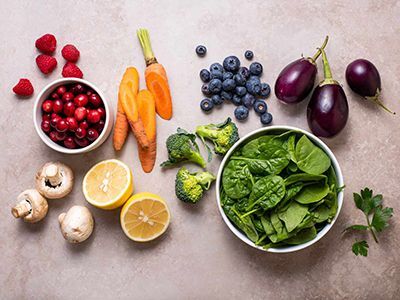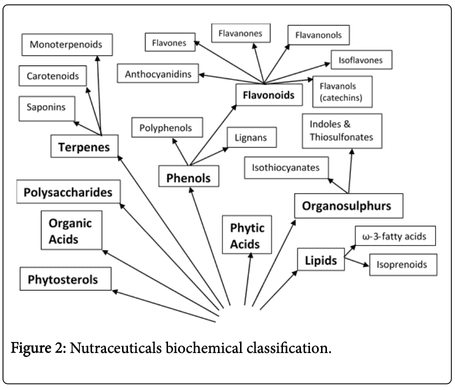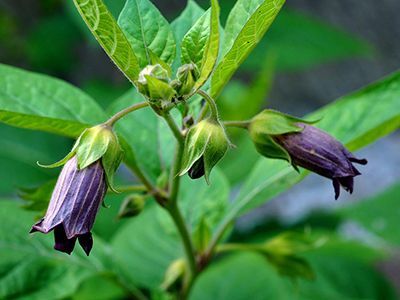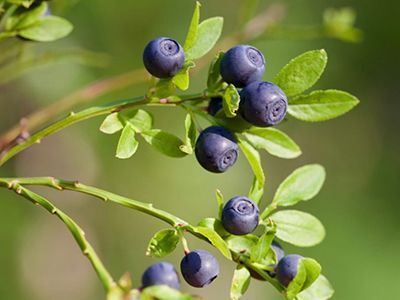Phytonutrients: Disease-Modifying Keys to Vitality
authored by Taylor Appel, MSCN, RH (AHG)

A healthy, well-balanced diet is essential for healing, especially if you have a chronic illness or cancer. Optimized daily nutrition can directly impact your body’s biology and disease outcome for the better. The most supportive approach is to eat a varied, whole-foods, minimally-processed diet, which can be beneficial for any individual, no matter their age or health status. Moreover, certain foods contain phytochemicals, or dietary chemicals, that have disease-suppressing qualities. Specific foods incorporated into your daily routine, along with medicinal and culinary herbs and spices, can help you leverage your diet for true healing potential.
Constituents found in plants are directly responsible for their therapeutic properties. These constituents significantly contribute to the therapeutic, immunomodulatory nature of plants used as herbal medicines. They act as pleiotropic disease-suppressing agents (i.e., having multiple functions on various body systems), gently providing the body what it needs for optimal health and well-being.1 Phytonutrients are capable of activating a cellular defense response to help combat oxidative stress and damage, optimizing the body’s various detoxification pathways, and helping to reduce the risk for autoimmune diseases and cancers.1,2

What are Phytonutrients?
Phytonutrients are bioactive compounds naturally produced by plants and fungi. They are chemicals that naturally occur to keep plants alive and healthy, protected against predators, and able to reproduce. Phytonutrients are found in all plant foods, like fruits, vegetables, legumes, grains, and spices. They are often referred to as nutraceuticals, and a host of other names (natural compounds/chemicals). Mederi founder Donnie Yance often calls them the nano piece of “food as nano-nutrients” along with Macro, and Micro.
These natural chemical compounds can greatly influence our health and overall vitality, especially when well-sourced and consumed appropriately. Each botanical, just like all other foods, is made up of a unique combination of chemical compounds. In plants, these are referred to as phytonutrients, or constituents.1,2 Animal foods also contain natural chemical compounds similar to phytonutrients, which are often referred to as nutraceuticals when isolated for research or production. **Note: the term ‘phytonutrients’ is often used interchangeably with nutraceuticals, so one is not exclusive to the other when speaking about compounds.**
Just as macronutrients like fats, proteins, and carbohydrates are all chemicals on a microscopic level, the same idea applies to herbal medicines, i.e., plants. For example, the reason rosemary smells so woodsy and fragrant is because of constituents called volatile oils. These same volatile oils directly contribute to the carminative (digestive support), analgesic (pain-relieving), and nervine (promotes nervous system health) properties of the rosemary plant.2,3 Research has identified hundreds of different compounds within plants, including volatile oils, that each possess the unique therapeutic potential to promote healing in numerous ways.

Health Benefits of Phytonutrients
Many phytonutrients are able to produce therapeutic effects, such as modulating the immune system, reducing inflammation, and improving overall well-being through their antioxidant and antimicrobial compounds.1,2 Each botanical medicine offers a myriad of beneficial compounds that can be utilized to support any health journey, from acute illness to chronic disease.
Phytonutrients play an essential role in the synergistic effect plant medicines have on suppressing inflammation, promoting ideal health outcomes, and optimizing longevity. By encouraging the use of the phytonutrient-rich botanical compounds, we can help regulate cellular degeneration and promote healthy DNA expression.1
Although there are thousands of identified and well-researched phytonutrients, including all of the vitamins and minerals, some lesser known, yet highly medicinal, constituents include:
Tannins
These polyphenolic chemicals are produced by nearly all botanicals and are usually found in higher concentrations in the leaves, fruits, or bark of most plant species. Generally, tannin-rich herbs and foods are used for their astringent properties, their ability to dry-up secretions, stop bleeding, and to protect and tighten-up the tissues of the body.2 Therapeutically, herbs high in tannins are commonly used to lessen gastric upset, reduce diarrhea, tonify tissues throughout the body, and may also help to reduce general inflammation. Tannic compounds are also able to address tissue-specific ailments, whereby the astringent properties can act both locally and systemically as needed.2,4

Food and Herbal Sources of Tannins:
- Darkly pigmented fruits/berries
- Green/Black tea
- Raspberry leaf
- Horse Chestnut
- Oaks
- Witch Hazel
- Yarrow
- Willow bark2
Alkaloids
These nitrogen-rich compounds also contain oxygen, sulfur, and other rarer elements, all of which contribute to their therapeutic benefits.2 Alkaloids can vary widely in their function, but all alkaloid-rich herbs can produce a myriad of pharmacological activities within the body. The discovery and isolation of alkaloids has greatly impacted the evolution of modern pharmacology and drug discovery.2,5 Some alkaloids, just like present-day pharmaceuticals, can be toxic at certain doses, and should be taken while under the care of a professional. Botanical medicines high in alkaloids should generally be taken in lower doses, unless specified by your care provider.

Food and Herbal Sources of Alkaloids:
- Lobelia
- Belladonna
- Scotch Broom
- Kava Kava
- Green/Black tea
- Cacao
- Hydrastis
- Trigonella
- Rauwolfia
- Gelsemium2
Flavonoids
There are over 400+ flavonoids that have been identified and are most commonly found in nearly all leaves, fruits, and flowers. These compounds are known as secondary metabolites and exist to help plants grow more efficiently.2 Flavonoids also protect plants from UV radiation through scavenging free radicals, essentially providing innate protection for that organism to thrive. Flavonoids also act as a pigment, giving certain plant parts their vibrant hues. Some commonly known flavonoids include quercetin, apigenin, naringin, genistein, anthocyanins, and epigallocatechin gallate (ECGC). When consumed, flavonoids promote a healthy biological response on a cellular level, improving the way our body responds to toxins such as allergens, viruses, carcinogens, and other natural and non-natural stressors.2,6

Food and Herbal Sources of Flavonoids:
- Calendula
- Green/Black tea
- Hawthorne
- Turmeric
- Gingko
- Chamomile
- Red Clover
- Bilberry2
Saponins
These constituents gained their name because, like soap, they form a frothy reaction when combined with water. On a chemical level, saponins are made up of steroid or terpenoid compounds that have both fat-soluble and water-soluble molecular structures.2 These chemicals impact cholesterol absorption in the digestive system and can help improve overall cholesterol levels in the body.
In plants, saponins behave as the active immune system, protecting the plant with a wax-like layer from any stress or harm. Although saponins are harder to isolate than other phytonutrients, their biological importance is dynamic. Saponin-rich foods and herbs can help to reduce inflammation, provide adrenal adaptogenic effects, and positively modulate hormones.2 In fact, saponins share a very similar chemical structure to that of our endogenous hormones and can act in a bioidentical nature. Many modern medications, such as contraceptives, were first developed from the basis of saponin structures found in plants due to their ability to mimic endogenous hormones.7

Food and Herbal Sources of Saponins:
- Horse Chestnut
- Wild Yam
- Licorice
- Alfalfa
- Asian Ginseng
- Yucca
- Clematis
- Asparagus
- Oats
- Chickpea
- Soybeans
- Saffron2,7
For a delicious, phytonutrient rich smoothie, try out the recipe below, adapted from a recipe often recommended by Donnie Yance for his clients.
Phytonutrient-Rich Smoothie
Ingredients
- 1 heaping scoop Beyond Whey (Natura Health Products)
- 1 teaspoon Fruit Anthocyanins (Naturologie)
- 1 scoop N-Liven (Natura Health Products)
- 2-3 oz. Coconut Water
- 3-6 oz. kefir, yogurt, or nut milk
- Optional: fresh or frozen mango pieces, strawberries, raspberries and/or blueberries

Instructions
Blend in a blender. Highly acidic juices and excessive blending can easily degrade the fragile immunologically active proteins in Beyond Whey. Therefore, blend the rest of the ingredients first, then add Beyond Whey at the end, blending at low speed for just long enough to mix. Adjust liquid amount as needed to create desired consistency.
...................................................................................................................................................
Eating a diverse diet, filled with colorful fruits and vegetables, is the best way to ensure an optimal, regular phytonutrient intake. Phytonutrients are truly the foundation of botanical medicine and with the right professional guidance, these powerful compounds can impart lasting health changes within the body, especially if you have chronic illness or cancer. As always, we recommend working with a qualified healthcare practitioner that can help you target your body’s specific phytonutrient needs and appropriately support your healing journey. Mederi Center practitioners offer an individualized approach to care that leverages the phytonutrients in plants and foods to help create the foundation for healing to unfold.
For additional insight into the therapeutic actions of phytonutrients, check out these blogs written by our founder, Donnie Yance, CN, RH (AHG):
Plant Medicine Can be a Powerful Ally for Cancer Patients
https://www.donnieyance.com/plant-medicine-can-be-a-powerful-ally-for-cancer-patients/
Resveratrol – “Privileged Structures” with Unique Advanced Health Promoting Properties Acting as an Epigenetic Modifier of Cancer Risk
https://www.donnieyance.com/resveratrol-privileged-structures-with-unique-advanced-health-promoting-properties-acting-as-an-epigenetic-modifier-of-cancer-risk/
Join the Mederi Center community by signing up for our email list! We send several emails a month with product promotions for patients, practical tips for healthy living, blogs written by our practitioners, information about events, and other news. You can unsubscribe at any time.
References
- Yance, D. R. (2013). Adaptogens in medical herbalism: Elite herbs and natural compounds for mastering stress, aging, and chronic disease. Healing Arts Press.
- Marciano, M., & Vizniak, N. A. (2015). In Evidence informed Botanical Medicine. essay, Professional Health Systems Inc.
- Nieto G, Ros G, Castillo J. Antioxidant and Antimicrobial Properties of Rosemary (Rosmarinus officinalis, L.): A Review. Medicines (Basel). 2018;5(3):98. Published 2018 Sep 4. doi:10.3390/medicines5030098
- Serrano J, Puupponen-Pimiä R, Dauer A, Aura AM, Saura-Calixto F. Tannins: current knowledge of food sources, intake, bioavailability and biological effects. Mol Nutr Food Res. 2009;53 Suppl 2:S310-S329. doi:10.1002/mnfr.200900039
- Ferreira MU. Alkaloids in Future Drug Discovery. Molecules. 2022;27(4):1347. Published 2022 Feb 16. doi:10.3390/molecules27041347
- Ferraz CR, Carvalho TT, Manchope MF, et al. Therapeutic Potential of Flavonoids in Pain and Inflammation: Mechanisms of Action, Pre-Clinical and Clinical Data, and Pharmaceutical Development. Molecules. 2020;25(3):762. Published 2020 Feb 10. doi:10.3390/molecules25030762
- Timilsena YP, Phosanam A, Stockmann R. Perspectives on Saponins: Food Functionality and Applications. Int J Mol Sci. 2023;24(17):13538. Published 2023


